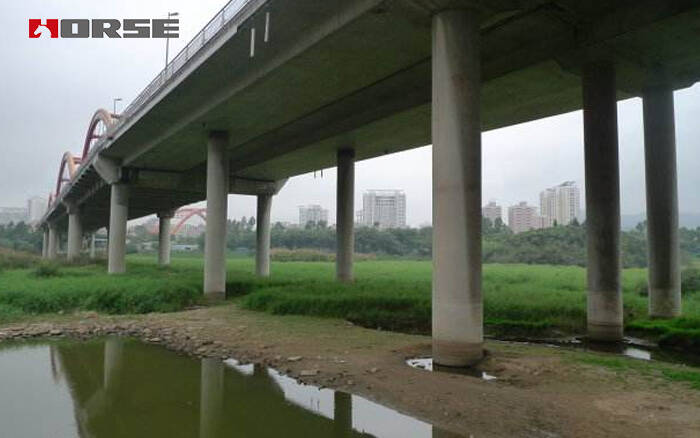Strengthening Honghu interchange bridge
carbon fiber reinfroced polymer
The Honghu overpass should be strengthened and reconstructed for the increase of traffic flow. The success of carbon fiber reinforcement in this project provides a new example for the bridge reinforcement project.

Project overview
In the first bend bridge, the four supports of the abutment appear to have different degrees of transverse long slit cracks. The edge of the support is partly lost due to the shear deformation of silicon, but it still changes the pressure state at the end of the bridge.
All the main beams, especially the inner main beams of the adjacent motorized lanes, appear a large number of cracks, most of them are force cracks, the distribution of the cracks is the most in the bottom of the beam, and the cracks in the web are very common. There are 5 cracks over 0.2mm, and some cracks are through through. Most of these cracks are structural stress cracks.
According to the test report of the No. four bridge, the main cause of the crack of the beam body is due to the overloading operation of the motor vehicle and the temperature change.
The transformation project is to transform the sidewalk + non motorized Lane on the north and south sides to 0.25.
M +2.0 M + 7 M rail sidewalk roadway +0.3 3M crash wall.
The standard of the reinforcement design: the load is 20, 120, and the net height of the road bridge is not less than 5.5 meters, and the seismic intensity is considered to be eight degrees.
Because the superstructure of the original bridge is not considered to meet the requirements of vehicle traffic.
Across the Buji River, there are three spans, 15 main girders (5 beams per span) and 4 hat beams, which need reinforcement.
Reinforcement scheme
1.Reinforcement of cap beam
At the end of the original design cap beam, the oblique rib was set, and it was found that the shear strength was not enough. The reinforcement was taken to increase the cross section (20 C m on both sides of the cap beam), and set inclined tendons and 16, 300 anchorage bars, buried depth 10 C M and 8 c m, at the same time, at the same time at the two ends of the cap beam. The stress level of the reinforced bar in the cap beam is improved by applying the external prestressing force. Then the anchor head and the prestressed reinforcement are sealed with the reinforced concrete.
2.Replacement of support
The replacement of the main beam bearing adopts 10 50 ton Jack to synchronize the 5 beams to replace the support. The replacement for the sliding bearing abutment of tetrafluoroethylene
3.Reinforcement of the main beam
1) crack repair
Chemical grouting is applied to 5 cracks above 0.2mm, and only a few cracks are needed for a large number of cracks less than 0.2mm.
2) reinforcement of main girder structures
First, the enlargement section method is used to reinforce the main girder.
3) carbon fiber reinforcement
In order not to make the main beam section too large, we should minimize the weight of the beam, and improve the bearing capacity of the beam.